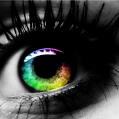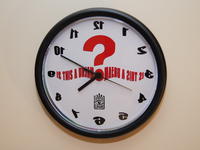Results 1 to 25 of 27
-
09-21-2008 10:53 PM #1
We need clarity!! Basic concepts of WILD, DILD and MILD
Seems to be a lot of confusion on these things, so want to clear them up.
WILD, DILD and MILD are all terms coined by the famous lucid dream researcher Stephen Laberge.
WILD and DILD are types of lucid dreams.
MILD is a method for inducing lucid dreams.
So basically if you ever have a lucid dream it is ALWAYS either going to be a DILD (most common) or a WILD. These are the basic Lucid Dream types. You cant have any others, because you either are dreaming and become lucid (DILD) or you awake and take that lucidity with you into dreaming (WILD).
a DILD is a Dream Initiated Lucid Dream - Becoming lucid whilst in a dream (adding awareness to dreaming)
a WILD is a Wake Initiated Lucid Dream - Being awake and aware and then smoothly entering a dream without a break in awareness (adding dreaming to awareness)
I find if incredibly frustrating when people consider WILD and DILD to be techniques. That's why im posting this!
As for MILD, this stand for Mnemonic Induction of Lucid Dreaming
(notice in MILD the I stand for Induction not Initiated as it does in WILD and DILD... small point but very important. Also in WILD AND DILD the LD stand for Lucid Dream, in MILD it stands for Lucid dreaming. Same small point, but equally as important.)
As for DEILD, this is nothing to do with Laberge and it is not a recognised piece of researched lucid dreaming terminology. In fact it seems to be refered to often in a contradictory sense. It's certainly not a type of Lucid Dream (because all lucid dreams have to fall under the WILD or DILD terms) , SO those of you who say things like "i've had 3 wilds 5 dilds and 3 deilds" are getting confused... a deild is a method for inducing either a WILD OR A DILD and not a type of lucid dream.
So that means it is a method. From what i've read in this forum, it seems to be very close to the MILD technique. I'd be hard pressed to use the term DEILD as a seperate entity. It simply seems to be a watered down version of MILD used in the middle of the night having just woken from a dream and not moving.
Don't want to come across pedantic but we do need to be clear about the terms we are using and it is foolish to invent new terminology that confuses matters (such as DEILD) when you could simply explain it using previously existing terms.
-
09-21-2008 11:15 PM #2knows

- Join Date
- Mar 2007
- LD Count
- 1billion+5
- Posts
- 546
- Likes
- 31
I stomp on your ideas.
-
09-22-2008 12:12 AM #3
Indeed...more clarifications would be nice. I am a newbie here, so it would be a great help. And since "LD sex wakes one up" is a placebo effect..alright, I don't have to be worried about doing it in LDs because it won't wake me. As for DEILD, isn't that more of a WILD induction than a DILD induction? Anyways...Sweet thread, thanks!
-
09-22-2008 01:54 PM #4
Correct Batman.
Although personally i don't think DEILD really should be seen as a method in its own right. It exists purely as an idea in this forum and is not recognised as a technique in the literature and research field of lucid dreaming.
If anything it is a Lucid dreaming HINT or TIP.
The premise of not moving when you wake from a dream is common knowledge in Lucid Dream publications. In all cases it is refered to as a handy tip to help improve your chances. I think it should stay that way. We really don't need Hints and Tips trying to become methods in thier own right.
DEILD to me is just a rewording of this common known lucidity tip, trying to pass itself off as a fully fledged method. If we start doing this for every handy hint and tip, we'll end up with so many "methods" that it'll become a minefield and complete mess.
Best thing i can suggest is read all the major publications on Lucid Dreaming, and use google, wiki etc to become aware of the established methods.
It's too easy in a forum like this to create our own little culture with our own made up terminology. Best be in line with the rest of the world and the field of lucid dreaming research as it stands for everyone (not just the members of this forum)
-
09-22-2008 02:19 PM #5
Deild isn´t recognised like a technic, but like a Wild variation.
Source: http://www.lucidity.com/NL42.1001Nights.htmlOne important reason for connecting WILDs and OBEs is that they share
phenomenological features. The experience of vibrations, strange noises,
electrical sensations, feelings of weight on the chest and difficulty
breathing, and floating -- sometimes with the sensation of peeling out
of the body are common to both. The primary intent of this NightLight
experiment was to see whether these sensations could be deliberately
evoked by attempting to initiate WILDs, and if so to find their
frequency of occurrence. Another purpose was to compare methods of WILD
induction.The procedure was carried out in the context of attempts to
re-enter dreams, under the assumption that the best time to directly
enter the REM state is immediately after having awakened from it.
I thinks this confirms that, Deild it´s a old teory that DV people give it the name "Deild". Some people even dare to say that created Deild...since June 08 DILD:53| WILD:55
-
09-23-2008 12:28 AM #6Member

- Join Date
- Sep 2008
- Gender

- Posts
- 33
- Likes
- 0
I always thought there was one kind of lucid dream... the lucid kind.
-
09-23-2008 12:34 AM #7Gentlemen. Ladies.


- Join Date
- Mar 2007
- Gender

- Location
- Right here... Reputation: 9999
- Posts
- 4,902
- Likes
- 473
- DJ Entries
- 4
You can view all the types of tutorials on how to do stuff like this here.

-
09-23-2008 03:34 AM #8
Makes sense.
I think DEILD should be renamed to "Dream Exit Induction of Lucid Dreaming", like MILD, but still remain a valid procedure.
DEILD gives a procedure to follow. If you want a definition of what it is, then I would say it is a detailed procedure on one method of inducing WILDs. It also makes it easier to talk with people about LDing. Instead of having to say "I initiate WILDs through WBTB but falling asleep immediately after waking", one can just say "I practice DEILD." It is a fan technique, yes, but a widely known one, like FILD.
People just use "ILD" because it's easy to remember, not because they want attention. It'd get overwhelming to have a ton of vastly different acronyms. The "ILD" system allows you to only have to memorize one or two letters, and add that onto the "ILD" to get the technique. I'd rather have "FILD" and "DEILD" than "UFWFBA (Using Fingers While Falling Back Asleep)" and "EDIGSA (Exiting a Dream and Immediately Going to Sleep Again)". Just think of the mess that would cause.
-
09-23-2008 04:49 AM #9
To make the clearing up a little more cleared up:
WILD and DILD are categories of techniques. The I in these two stands for Initiated. MILD, DEILD, and the others are techniques. The I stands for Induced.
The difference in names is just part of the nomenclature of lucid dreaming.
MILD is part of the DILD class, because it involves becoming lucid in an existing dream. DEILD is part of the WILD class, because it goes directly from waking to a lucid dream.
The current techniques do have "creators"; just as we credit Newton with discovering gravity, we have some techniques that were first described and developed by an individual.
As for the tense of the names, its just part of current trends. You'll notice from browsing the forums that if someone has a lucid dream through the MILD method, they say that they "had a MILD". That seems to be how the term is used most often now, and the proper tense for the D would be "Dream". As a result, whenever someone defines the acronym, they use Mnemonic Induced Lucid Dream, not Mnemonic Induction of Lucid Dreaming.
-
09-23-2008 12:25 PM #10
I don't want to get into arguments about semantics, but i wouldn't call WILD and DILD categorys of techniques.They are the doorways to your destination of lucid dreaming.
As such it's easier to called a WILD and a DILD types of lucid dreams and the methods used to arrive at these types of lucid dreams would be your methods/techniques. These techniques can then be classified into two distinct groups depending on what type of lucid dream entrance they are aiming for.
To try and be clearer,
Your end goal is to achieve a Lucid Dream.
A Lucid Dream will either be adding awareness to dreaming, or adding dreaming to awareness.
Imagine Lucid Dreaming to be a house. Being inside the house is your destination.
There are two entrances, the Front Door and the BackDoor. For the sake of argument lets call the front door WILD and the backdoor DILD.
So you want to arrive at your destination, inside the House (Lucid dreaming),
you assess where you are in relation to the house, maybe you're in another town (wide awake) or in the garden (just woken up from a dream)
You'll also assess which entrance is going to be easier to get in depending on where you are (are you facing the front door (WILD) or back door (DILD))
How you arrive at the house would be the TECHNIQUE, so maybe you could drive, walk, take a plane, taxi, boat etc. maybe even a combination of these techniques (so the driving, walking etc. would be methods like MILD, CAT, VILD etc.)
Of course how you arrive at the house will also depend on where you are in relation to it, which will help you choose your technique of travel (cause there's no point flying to the house if you're in the front garden.)
Of course the technique you arrive at the house may predispose you to enter through either the front door or backdoor... Perhaps the carpark is at the front of the house, or there is a landing strip in the backgarden.
Whilst this analogy isn't perfect, it helps make the point clearer.
Lucid Dreaming is the destination.
WILD and DILD are the entrances to that destination (and as such essentially part of that destination)
The techniques used (MILD etc.) are the transport to arrive at those entrances, which allow you to enter the destination.Last edited by spaceexplorer; 09-23-2008 at 12:32 PM.
-
09-23-2008 01:04 PM #11
Nice analogy, i´ll try use another to show my point of view. Eg: Let´s supose you practice Fencing, Fencing it´s the Sport but you a variety of weapons and respective styles(Foil, Épée, Sabre), you can say "I do Fencing" but you don´t especificate the style, can be one of the three.
In lucid dreaming it´s the same thing, lucid dream it´s the "sport" and you have two methods of making it, Dild and Wild. Dild when you became lucid during the dream, Wild when you stay lucid during the oniric process. The question is each person has his own way of Dild or Wild. Autosugestion, RCs, Mild are some ways of Dild, in theory all this technics will do the same: becaming lucid during the dream. Vild, Fild, Deild, Tild are technics in that you stay lucid until the start of the dream, so are forms of Wilding.
When people says "i had 3 deilds and 1 Dild", it´s like saying "I had 3 wilds and 1Dild", first sentence only is more specific. Returning to the fencing analogy, during a combat you can have a more agressive style or more defensive. In lucid dreaming, some people will prefer using Visualization(Vild) to achive wild, others will prefer a phisical anchor like Fild.since June 08 DILD:53| WILD:55
-
09-23-2008 01:19 PM #12
Language can be a tricky thing can't it!
Even the simplest words can mean very different things to two different people.
I don't want to be too anal about it all.
Both analogys work. I suppose the important thing is to to to be as descriptive and clear as possible when discussing these things, so that we actually are talking about the same things. That way we'll not descend into arguments over semantics.
Most important thing is we all try and help each other out. We're all in this together and it's a great subject. I'm glad to have other people to have these discussions with at all!
Thanks for describing your perspective. Means that when i discuss things with you i'll know when maybe we are using slightly different uses of the terminology. As long as we can all help pull each other up, it's all good
-
09-23-2008 01:30 PM #13
A DEILD is a lucid dream induction method created here. It falls under the WILD category, but its more of a subsection of it, so it needs its own name.
-
10-24-2008 10:36 PM #14Translation of my name

- Join Date
- Oct 2008
- Gender

- Location
- Croatia
- Posts
- 1
- Likes
- 0
 Now I get it
Now I get it
Really ,I heard this for the first time,i thougt that WILD as wake initiation of ld-s and wake initiated ld is the same thing,but it's not.I also couldn't see the difference between MILD and DILD,but now,it all makes sense.
thanks for letting me know.
-
10-25-2008 12:17 AM #15Banned

- Join Date
- Mar 2008
- Posts
- 4,904
- Likes
- 64
Personally, I consider "WILDing" to be the process of keeping your mind awake while your body falls asleep in order to enter a Wake Induced Lucid Dream. Just as far as terminology goes, it's easy to use. That way we don't have to say "last night I tried to keep my mind awake while my body fell asleep to enter a WILD", you could just say, "last night I tried WILDing".
-
10-25-2008 12:08 PM #16River inbetween worlds Achievements:






- Join Date
- Apr 2007
- Gender

- Location
- Slovak Republic
- Posts
- 741
- Likes
- 22
Idea of cleaning up forum terminology is really interesting and helpful one. But if you take a look at posts from experienced members, they tend to be more accepting to variety of techniques, becouse they know, just as you probably will over time, that this clarification is not possible in this kind of community. Nearly every day i see some kind of ILD, and i know, that they are just variations of some general induction technique.
If I should continue with your analogy, i could say... Well. There is not WILD and DILD as separate category of lucid dream, but there is only LD, and mentioned WIs or DIs are simply kind of methods how to enter state of LD. If I would be even more precise. I would say, that LD, is only part of awareness spectrum possible in normal dream. So really. If you are lucid or not depends only on fact, if you are above or below some threshold value of awareness.
Every induction technique seems to increase awareness level during dream to higher value so crossing the threshold would be more probable. Direct entry into dream naturally brings this increased level of awareness.
The reason why there are so many ILDs is, that people writing them are on a wery low level of understanding of what is actually in behind of these processes and are stuck on variations. Or even if they understand the process inbehind, they think, their own variation deserves a name.
Returning to your topic, i would say.It does not matter how you achieve that high state of awareness allowing LD to happen. Just the fact you achieved it is relevant.
Every induction technique is just a transformation of state you are currently at into state of LD. As this, every technique has:
1. Inputs {states at which you can begin}
2. Transformation {process of technique itself}
3. Outputs {what are possible outcomes of technique}
This is everything what technique should be all about. Dreamviews and another forums added fourth "value":
4. Name
And this is, where all the mess began Opened DV topics Dream Saturated Mind,WILD happens when we fall asleep,Breaking illusions: Sleep paralysis (WILD help (method)),
Opened DV topics Dream Saturated Mind,WILD happens when we fall asleep,Breaking illusions: Sleep paralysis (WILD help (method)),
Breaking illusions: Dream journal,Generic WILD guide,LD Dictionary {safe, confusing and misused words organized},Breaking illusions: Learning WILD (Amateur vs. Professional)

My musical homepage
-
08-05-2009 04:49 PM #17
-
08-06-2009 08:51 AM #18¿ƃuıɯɐǝɹp noʎ ǝɹɐ Achievements:




- Join Date
- Mar 2008
- Gender

- Location
- New Zealand
- Posts
- 926
- Likes
- 36
-
08-06-2009 08:54 AM #19¿ƃuıɯɐǝɹp noʎ ǝɹɐ Achievements:




- Join Date
- Mar 2008
- Gender

- Location
- New Zealand
- Posts
- 926
- Likes
- 36
-
08-06-2009 09:43 AM #20I'm the mother flippin'

- Join Date
- Dec 2006
- Gender

- Location
- Australia
- Posts
- 217
- Likes
- 0
Woo sweet thread.. I'll have to read later when I have more time.
-
08-29-2009 04:50 AM #21
thankyou, I have been getting confused!
˙ǝןƃuɐ ʇuǝɹǝɟɟıp ɐ ɯoɹɟ pןɹoʍ ǝɥʇ ʇɐ ʞooן ɐ ƃuıʞɐʇ
DILDS: 6
WILDS: O

Are you dreaming now? Do a reality check.
-
03-14-2013 01:32 PM #22
so Taylor no WILDS huh? Try it its awesome its an experiance you won't forget ever.
-
03-14-2013 01:35 PM #23
what is a DEILD. I have always considered I've had x wild x dild and have gotten into a dild x amounts of time by mild and x amounts of time by rcild I agree your either awake than enter a dream aware or asleep than aware there is no middle ground.
-
03-14-2013 06:42 PM #24
DEILD, Dream Exit Induced Lucid Dream, is basically a WILD that you do right after you exit dream: DEILD - Dream Exit Induced Lucid Dream - Lucid Dreaming - Dream Views

Here's also tutorial if you want to try it, many people have success with it: DEILD Tutorial - Lucid Dreaming - Dream Views
-
03-14-2013 07:06 PM #25
Yea I was reading that earlier I've actually been doing that without knowing it was an actual thing haha. I have problems with sleep paralysis from an awake state because for some reason I enter a dream before paralysis even happens so I always used to enter a wild from a lucid dream which would actually be DILD except the mind is already in an awakened state sometimes I wake myself from the dream to do a wild.




 LinkBack URL
LinkBack URL About LinkBacks
About LinkBacks










Bookmarks